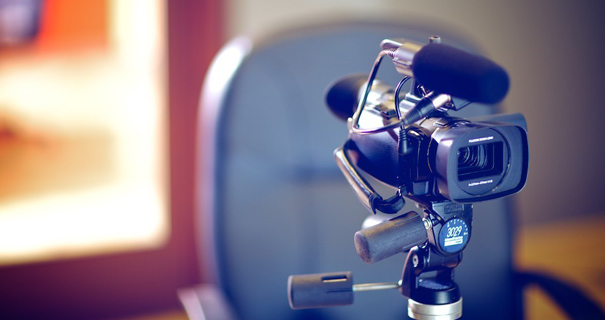How to Master the Art of Trial Presentations for Maximum Legal Impact
How to Master the Art of Trial Presentations for Maximum Legal Impact
Blog Article
The Power of Visuals in Trial Presentations for a Winning Argument
The assimilation of visuals in trial presentations has actually arised as an important aspect in effectively interacting intricate arguments to jurors. By utilizing numerous forms of visual aids-- be it diagrams, photographs, or computer animations-- lawyers can improve understanding and retention, ultimately shaping the court's assumption of the case.
Value of Visuals in Tests
In lots of legal settings, visuals play an important role in improving the performance of test presentations. The integration of aesthetic aspects can significantly impact jurors' understanding and retention of intricate information, thereby shaping their perceptions and decisions. Visuals, such as charts, layouts, and photos, can simplify detailed stories, making them a lot more easily accessible and compelling.
Furthermore, the human mind processes visual details much more efficiently than message, which underscores the relevance of including visuals right into lawful debates. By equating thick legal concepts right into aesthetic styles, lawyers can promote clearer interaction, making certain that bottom lines are not neglected during trials.
In addition, visuals offer to engage jurors on an emotional level, fostering a link to the situation that words alone might fail to accomplish. The tactical use visuals can evoke compassion, triggering jurors to consider the human elements of the case.
Ultimately, the value of visuals in trials depends on their capacity to improve clearness, improve juror involvement, and strengthen the narrative being offered. This potent combination is vital for crafting convincing disagreements that reverberate with jurors and affect the outcome of lawful proceedings.
Sorts Of Visuals to Make Use Of
Effective trial presentations can significantly take advantage of a selection of aesthetic tools that accommodate different elements of the instance. trial presentations. Making use of diagrams and graphes can properly break down complex info, making it extra absorbable for jurors. As an example, flowcharts can highlight the series of occasions, while bar chart may succinctly compare appropriate data points.

Animations and simulations can likewise play an important role, especially in instances including technical information or complex circumstances. These visuals can dynamically stand for processes or actions, supplying quality and interaction that fixed images might not achieve.
Moreover, infographics incorporate message and visuals to summarize important info efficiently. They can present timelines, data, and significant instance factors in an aesthetically enticing manner, making it much easier for jurors to this link comply with the disagreement.
Enhancing Understanding and Retention

Enhancing comprehension and retention during trial presentations is crucial for making certain that jurors realize the essential components of a case. Aesthetic help function as powerful tools hereof, converting complicated details right into quickly digestible styles. By utilizing charts, representations, and infographics, lawyers can streamline elaborate information and emphasize essential factors that may or else be neglected.
Researches have shown that individuals retain details dramatically much better when it exists aesthetically. This is particularly important in a trial setup, where jurors may be overwhelmed by the quantity of evidence look here and testament. By tactically including visuals, lawyers can guide jurors' attention to the most critical elements of the instance, enhancing their understanding and memory of the material presented.

Producing Engaging Presentations
Fascinating jurors' attention during trial presentations is essential for communicating an engaging narrative. Involving discussions leverage aesthetic elements check out here to produce a memorable experience that resonates with jurors. The critical use of graphics, computer animations, and video clips can illuminate intricate details, making it extra accessible and relatable.

Additionally, including storytelling strategies can improve interaction. Presenting evidence in a sensible series that builds sob story enables jurors to get in touch with the material on a personal level. Diverse presentation layouts, such as integrating brief video clip clips or interactive elements, can additionally sustain rate of interest and focus throughout the trial.
Inevitably, an appealing discussion fosters an extra extensive understanding of the case, allowing jurors to much better appreciate the debates existing and causing a more positive end result.
Case Studies and Success Stories
Numerous study highlight the substantial influence of visuals in test presentations, showing their capability to influence juror perceptions and ultimately the results of instances. A remarkable case entailing an individual injury insurance claim illustrated just how the usage of a 3D computer animation of the mishap scene made clear complex details. Jurors reported really feeling more informed and understanding, considerably swaying their choice for the plaintiff.
In an additional instance, a company litigation situation made use of infographics to present economic information and timelines, making elaborate details obtainable. The aesthetic representation allowed jurors to comprehend the nuances of the case better than verbal explanations alone. trial presentations. Because of this, the jury returned a judgment that surpassed the customer's assumptions
Additionally, a criminal protection case used pictures and video clip proof to develop an alibi. The compelling visuals not just aided in developing question yet likewise reverberated emotionally with jurors, causing a pardon. These success tales emphasize the necessity of incorporating visuals right into test presentations, as they improve understanding, retention, and ultimately, the persuasive power of lawful disagreements. The strategic use of visuals is undoubtedly changing the landscape of trial campaigning for.
Conclusion
In final thought, the calculated unification of visuals in trial discussions dramatically enhances jurors' understanding and retention of complex information. Involving presentations, supported by compelling instance studies, demonstrate the profound effect that visuals can have on convincing interaction.
Report this page